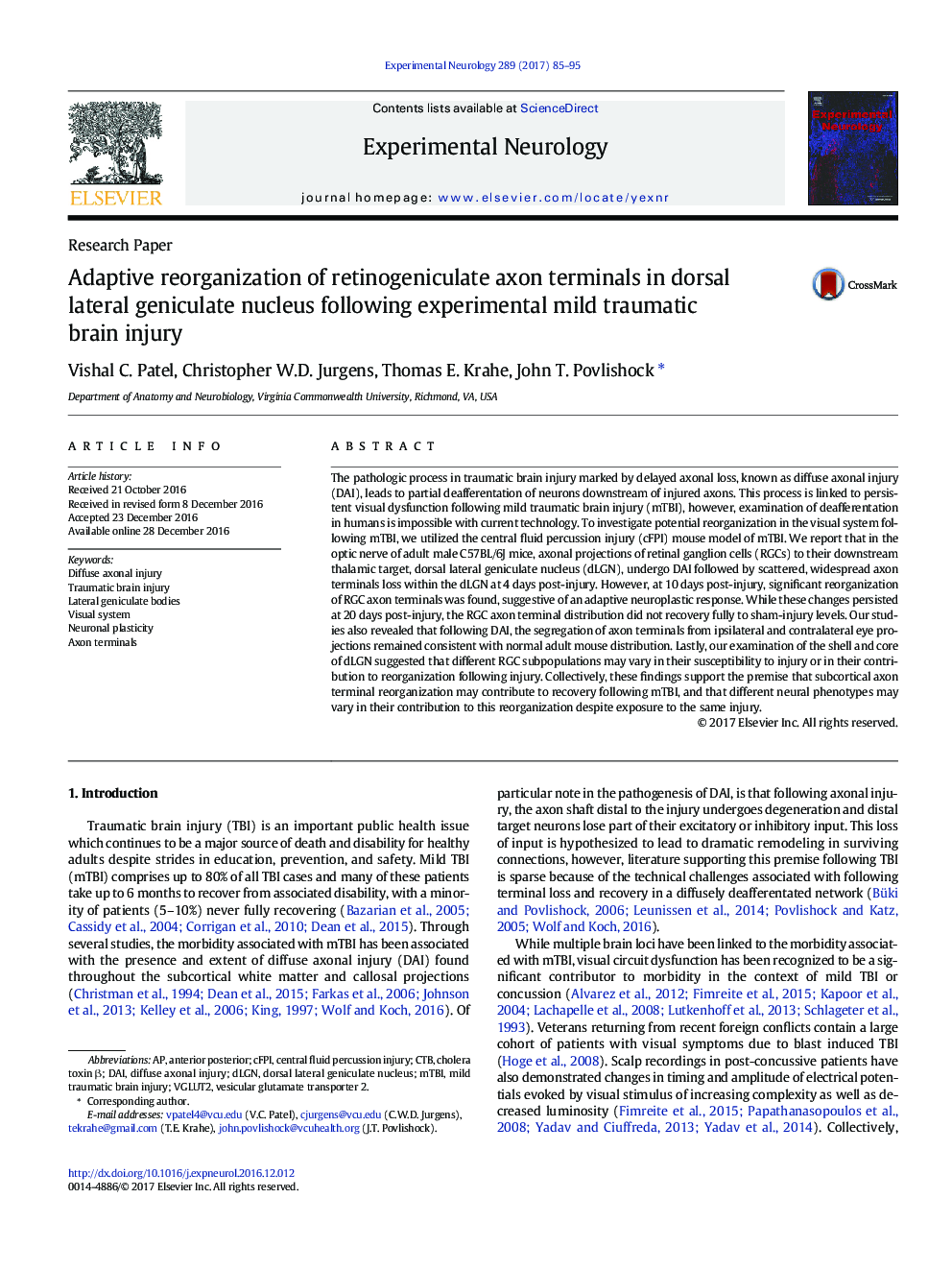| Article ID | Journal | Published Year | Pages | File Type |
|---|---|---|---|---|
| 5629353 | Experimental Neurology | 2017 | 11 Pages |
â¢We confirm that mild traumatic brain injury induces deafferentation in the LGN.â¢Diffuse deafferentation in LGN triggers adaptive reorganization among intact axons.â¢This reorganization maintains eye specific segregation of axon terminals.â¢Different retinal ganglion cell subpopulations may vary their response to injury.
The pathologic process in traumatic brain injury marked by delayed axonal loss, known as diffuse axonal injury (DAI), leads to partial deafferentation of neurons downstream of injured axons. This process is linked to persistent visual dysfunction following mild traumatic brain injury (mTBI), however, examination of deafferentation in humans is impossible with current technology. To investigate potential reorganization in the visual system following mTBI, we utilized the central fluid percussion injury (cFPI) mouse model of mTBI. We report that in the optic nerve of adult male C57BL/6J mice, axonal projections of retinal ganglion cells (RGCs) to their downstream thalamic target, dorsal lateral geniculate nucleus (dLGN), undergo DAI followed by scattered, widespread axon terminals loss within the dLGN at 4Â days post-injury. However, at 10Â days post-injury, significant reorganization of RGC axon terminals was found, suggestive of an adaptive neuroplastic response. While these changes persisted at 20Â days post-injury, the RGC axon terminal distribution did not recovery fully to sham-injury levels. Our studies also revealed that following DAI, the segregation of axon terminals from ipsilateral and contralateral eye projections remained consistent with normal adult mouse distribution. Lastly, our examination of the shell and core of dLGN suggested that different RGC subpopulations may vary in their susceptibility to injury or in their contribution to reorganization following injury. Collectively, these findings support the premise that subcortical axon terminal reorganization may contribute to recovery following mTBI, and that different neural phenotypes may vary in their contribution to this reorganization despite exposure to the same injury.
